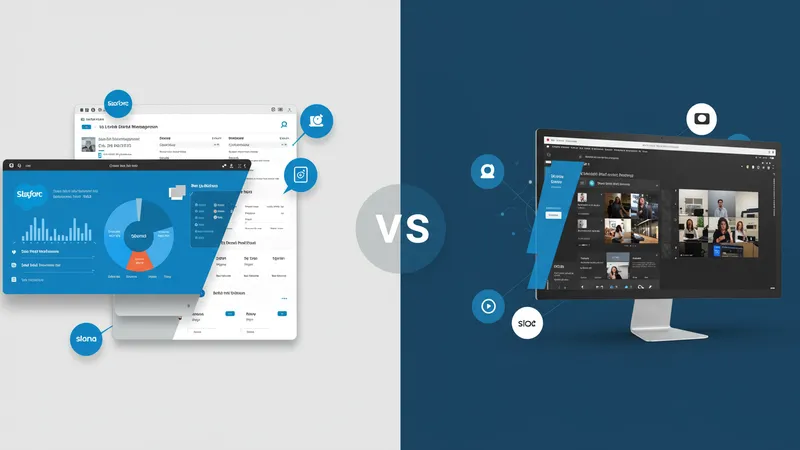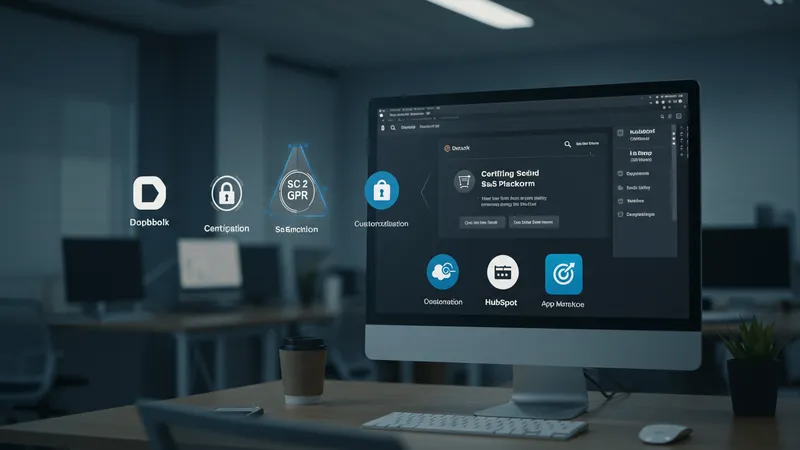

Modern companies face a rapidly evolving technological landscape, challenging them to remain agile and competitive while controlling costs. Software as a Service, or SaaS, offers a solution by delivering cloud-based software through subscription models rather than traditional licensing and on-premise installations. This approach enables organizations to access tools for project management, accounting, customer relations, collaboration, and more—often without major upfront investments or complex maintenance. The central promise of SaaS lies in its ability to streamline processes, improve data accessibility, and foster innovation through scalable, always-up-to-date software resources.
By leveraging SaaS, businesses can eliminate many hurdles associated with traditional software deployment, including lengthy installation procedures, frequent manual updates, and the risk of technical obsolescence. SaaS providers handle all technical maintenance and upgrades, ensuring users always have access to the latest features without the associated workload. This technology model bolsters operational efficiency by enabling remote access, facilitating automation, and making cutting-edge capabilities more accessible to organizations of every size.

What sets SaaS platforms apart from legacy software is not just the delivery method, but the relentless pace of improvement. For example, Salesforce has redefined how businesses handle sales pipelines and customer engagement through a suite of online tools and integrations. Meanwhile, Zoom allows for seamless remote meetings, bridging teams across continents with minimal setup, whereas traditional setups required expensive hardware and lengthy configuration. Efficiency is further enhanced when companies use a combination of SaaS tools—integrating Slack for communications, Trello or Asana for project oversight, and QuickBooks Online for simplified accounting processes.
The flexibility of SaaS is particularly evident in its pricing and scaling models. Most platforms, such as HubSpot and Dropbox, deliver functionality through various subscription tiers, allowing organizations to pick features that match their evolving needs. This minimal commitment supports experimentation and quick pivots as business strategies change. Moreover, businesses can efficiently manage cyber risk through SaaS security features like those offered by Zendesk and Dropbox, which maintain strict compliance and robust data protection protocols as part of their core offerings.
According to industry analysts, businesses that adopt SaaS experience, on average, greater employee productivity and faster time-to-market than counterparts using legacy IT solutions. This is partly because SaaS platforms prioritize user-friendly interfaces and intuitive onboarding. For instance, Shopify empowers entrepreneurs to build online storefronts with little technical knowledge, while the integration between tools such as Slack and Asana reduces workflow silos and boosts transparency. This ecosystem approach is turning software into a strategic driver of growth rather than a static cost center.
Despite these advances, businesses must carefully evaluate SaaS providers for data privacy, uptime guarantees, and support structures that keep operations running smoothly. Many platforms now offer APIs, customization options, and integration with legacy systems, further nurturing innovation and adaptability. As market competition increases, expect to see SaaS evolving with artificial intelligence, automation, and deeper analytics that will forever reshape how businesses approach their core functions. The deeper details reveal even more valuable insights ahead, particularly when comparing features, performance, and strategic ROI among leading SaaS platforms…
One of the most pronounced benefits of SaaS adoption is rapid deployment. Solutions like Salesforce and HubSpot can be implemented in days rather than months, compared to traditional on-premise deployments. This speed accelerates productivity by minimizing downtime and allowing companies to quickly adapt their tools as needs change. In fast-paced markets, the time saved translates into a tangible competitive edge.

Another important aspect is continuous updates. SaaS providers consistently roll out new features, security patches, and performance enhancements with no disruption to end users. Tools like Dropbox and QuickBooks Online exemplify this, automatically updating in the background so businesses can focus on their core activities. Users benefit from the latest innovations, often driven by industry best practices and customer feedback, without manual intervention.
SaaS also brings powerful data accessibility and collaboration advantages. Tools such as Slack, Trello, and Zoom allow employees to connect and share information from any location. This remote work capability is critical for global or distributed teams, reducing reliance on physical infrastructure and facilitating seamless collaboration on complex projects. Real-time communication and document sharing boost team cohesion and decision-making agility.
Cost efficiency is enabled by predictable subscription-based pricing. Businesses save on hardware, reduce IT maintenance costs, and avoid large capital expenditures. With platforms like Shopify, organizations can scale their e-commerce operations up or down as needed, paying only for what they use. These flexible pricing models help manage budgets and allocate resources to innovation or growth initiatives rather than maintenance.
SaaS solutions vary widely in feature sets, making it essential to evaluate platforms based on organizational requirements. Salesforce stands out for CRM functionalities, offering support for lead management, analytics, and customization. Companies relying on detailed customer insights and sales optimization often gravitate towards Salesforce due to its extensive ecosystem of integrations with applications like Asana and Slack.

Collaboration platforms such as Slack and Zoom provide different strengths. While Slack excels at persistent chat channels and deep integrations with other SaaS tools, Zoom offers reliable high-definition video conferencing suited to virtual meetings, webinars, and online training. These differences can influence how teams interact—text-oriented versus face-to-face communication—depending on business culture and operational needs.
When managing business workflows, Trello and Asana offer flexible project management methodologies. Trello uses a visual card-based interface ideal for kanban-style workflows, while Asana supports more detailed task assignment and project tracking. Their integration capabilities allow seamless synchronization with document storage platforms like Dropbox and communication tools like Slack.
Accounting and financial oversight are streamlined by platforms like QuickBooks Online and Shopify. While QuickBooks Online automates invoicing, expense tracking, and reporting, Shopify combines retail management with online payment systems and inventory automation. Both offer robust APIs for third-party connectivity, ensuring financial processes are both controlled and scalable as business demands grow.
Security is a foremost concern for organizations deploying SaaS solutions. Providers like Dropbox and Zendesk invest heavily in encryption protocols, access management, and compliance certifications such as SOC 2 and GDPR adherence. These safeguards help protect sensitive business data against unauthorized access and cyber threats, making SaaS platforms suitable for even regulated industries.

Customization options allow SaaS platforms to fit diverse workflows. Salesforce and HubSpot, for instance, provide extensive customization through modules, automation workflows, and even proprietary app marketplaces. This flexibility supports industry-specific needs, enabling businesses to design unique solutions without the complexity of building custom software from scratch.
Integration is another driving force for SaaS adoption. Through APIs and prebuilt connectors, platforms like Slack, Asana, and Trello can exchange data seamlessly, eliminating redundancy and manual data entry. This interoperability ensures that information flows effortlessly across departments, breaking down silos and fostering a unified business environment.
As businesses increasingly rely on multiple SaaS tools, integration strategies are crucial for maintaining scalability and performance. Regular evaluation of SaaS compatibility and data portability ensures that organizations retain ownership and access to critical information even as platform usage evolves. Selecting providers with a proven history of supporting integrations reduces the risk of workflow disruptions during system upgrades or vendor transitions.
The SaaS landscape is poised for further transformation as artificial intelligence (AI) and machine learning become integral components of core features. Platforms such as Salesforce already employ AI-driven analytics and forecasting tools to enhance customer insights and automate repetitive processes. This trend is set to accelerate, empowering businesses with more predictive, data-driven decision-making capabilities.

Automation within SaaS platforms is simplifying workflows across industries. For example, HubSpot and Asana enable rule-based triggers for tasks, follow-ups, and notifications. These advances reduce manual effort, lower the risk of human error, and allow employees to focus on strategic planning and creative problem-solving, rather than routine administration.
Another emerging focus is on industry-specific SaaS solutions. Providers are tailoring offerings for verticals such as e-commerce, hospitality, and manufacturing, addressing unique regulatory, operational, and market dynamics. Shopify’s ecosystem is a prime example, delivering both broad and niche functionality for online retailers. This specialization helps businesses adopt technology that’s finely tuned to their competitive environment.
Ultimately, SaaS is becoming a foundational element in digital transformation strategies. The combination of low entry barriers, continuous innovation, and scalability enables businesses of any size to compete effectively on a global scale. As adoption grows, we can expect more interconnected, intelligent, and specialized SaaS platforms, setting a new standard for business efficiency and innovation.